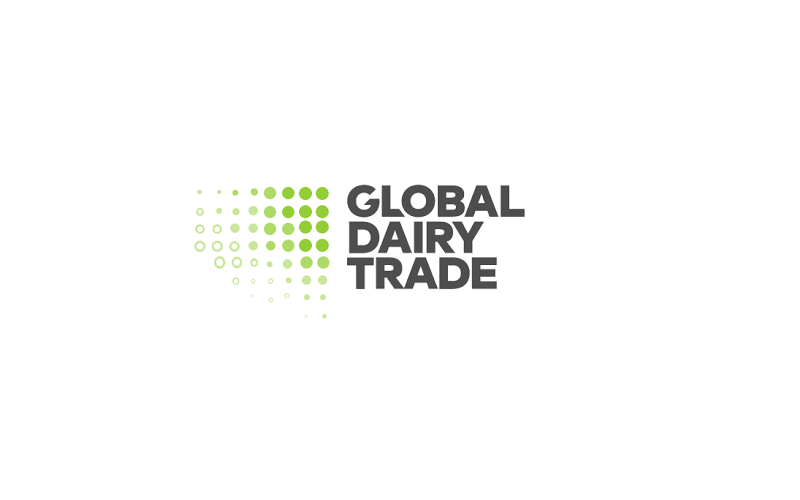Nestlé CEO Faces Tough Decisions as Growth Target Downgrades Loom
Sourse: DairyNews.today
New Nestlé CEO Laurent Freixe is navigating a challenging landscape as he adjusts the company's growth outlook amidst softening consumer demand and cost pressures.

Following his recent announcement, the Swiss food giant has downgraded its 2024 organic growth forecast to approximately 2%, a notable drop from the “at least 3%” target set by his predecessor, Mark Schneider, in July. This adjustment marks the lowest growth target since 2017, when Nestlé recorded a 2.4% increase.
Freixe, who took the helm on September 1 after nearly 40 years at Nestlé, faces the daunting task of steering the world's largest food manufacturer through turbulent market conditions. His cautious optimism is reflected in his preference for "achievable and hopefully beatable" guidance, as he outlined in a recent analyst call. He attributed the growth slowdown to a combination of subdued consumer demand and lingering pricing pressures from cost inflation, despite a general easing of input costs.
Organic Growth Challenges and Downgraded Targets
The downgrade to 2% organic growth contrasts sharply with the company’s 6.2% figure in 2010, a decade when Nestlé averaged 6.3%. The current fiscal year could see Nestlé’s lowest organic growth rate in over 20 years if the target is not met. Real internal growth, which excludes pricing effects to measure volume changes, has also struggled, standing at just 0.5% year-to-date.
Freixe’s cautious outlook is reflected in his decision to merge several of Nestlé’s business units—bringing North America, Latin America, and Greater China into other zones to create three geographical divisions instead of five. While some analysts view this reorganization as a positive step toward efficiency, others remain skeptical about its potential to significantly boost growth.
Market Reactions and Analyst Outlook
Investment banks have already revised their forecasts in light of the recent guidance. Jefferies, for example, cut its projection for Nestlé’s 2024 organic growth from 3.2% to 2% and downgraded its 2025 expectations to 3% from 3.8%. Additionally, Jefferies predicts that Nestlé’s underlying trading operating profit (UTOP) margin will drop to 16.9% in 2024 and 16.2% in 2025.
David Hayes, an analyst at Jefferies, remarked that a more realistic mid-term growth target would likely hover around 4%, a level that may impact both Nestlé’s valuation and its peers into 2025. He added that an average 3% annual growth rate, consistent with the pre-Covid period, seems more likely for Nestlé's mid-term delivery.
Freixe, however, has been reluctant to offer specific mid-term targets, instead emphasizing the company's strong portfolio and its potential to outperform the broader food and beverage industry.
Consumer Demand Weakness and Geographic Pressures
The downturn in consumer spending has been a key factor in Nestlé’s recent struggles. Freixe and CFO Anna Manz noted that consumer demand has been weak across various regions, with inventory reductions by retailers exacerbating the issue. In North America, particularly in pet care, frozen foods, and coffee creamers, negative pricing trends have emerged. Meanwhile, Europe is seeing consumers prioritize affordability, with Turkey experiencing a pronounced slowdown.
In Latin America, softer consumer demand has persisted, with retailer inventory reductions dragging down real internal growth by 130 basis points in the region. Analysts from Barclays, led by Warren Ackerman, echoed these concerns, highlighting the challenges facing Nestlé across multiple geographies.
Strategic Adjustments and Margin Pressure
In response to the tough market conditions, Freixe has signaled a focus on investment in key brands and categories. Despite efforts to improve market share, overall growth has been hampered by weak consumer demand. The UTOP margin, previously forecast to see a moderate increase, has now been revised to "around" 17% for 2024, down from 17.3% in the previous year.
Freixe and Manz have acknowledged that margins may contract further before improving, as the company continues to invest in efficiencies and technological advancements. Analysts from Barclays warn that 2025 could be a "transitional year" with negative earnings per share (EPS) growth for a second consecutive year.
Looking Forward
As Nestlé gears up for its Capital Markets Day on November 19, investors and analysts will be closely watching for further guidance on the company’s mid-term targets. While the current environment is challenging, Freixe remains confident that Nestlé can innovate, connect better with consumers, and ultimately gain market share, especially through its "billionaire brands" that contribute to the majority of sales.
However, Callum Elliott of AllianceBernstein cautions that while Freixe’s quick reorganization of geographical structures may be seen as a bold move, it may not be enough to address the deeper consumer and category-level challenges that Nestlé faces globally.
As Freixe charts a path forward for Nestlé, he is tasked with balancing the need for strategic investments with the reality of softening demand, all while maintaining investor confidence in the company’s long-term growth potential.
Freixe, who took the helm on September 1 after nearly 40 years at Nestlé, faces the daunting task of steering the world's largest food manufacturer through turbulent market conditions. His cautious optimism is reflected in his preference for "achievable and hopefully beatable" guidance, as he outlined in a recent analyst call. He attributed the growth slowdown to a combination of subdued consumer demand and lingering pricing pressures from cost inflation, despite a general easing of input costs.
Organic Growth Challenges and Downgraded Targets
The downgrade to 2% organic growth contrasts sharply with the company’s 6.2% figure in 2010, a decade when Nestlé averaged 6.3%. The current fiscal year could see Nestlé’s lowest organic growth rate in over 20 years if the target is not met. Real internal growth, which excludes pricing effects to measure volume changes, has also struggled, standing at just 0.5% year-to-date.
Freixe’s cautious outlook is reflected in his decision to merge several of Nestlé’s business units—bringing North America, Latin America, and Greater China into other zones to create three geographical divisions instead of five. While some analysts view this reorganization as a positive step toward efficiency, others remain skeptical about its potential to significantly boost growth.
Market Reactions and Analyst Outlook
Investment banks have already revised their forecasts in light of the recent guidance. Jefferies, for example, cut its projection for Nestlé’s 2024 organic growth from 3.2% to 2% and downgraded its 2025 expectations to 3% from 3.8%. Additionally, Jefferies predicts that Nestlé’s underlying trading operating profit (UTOP) margin will drop to 16.9% in 2024 and 16.2% in 2025.
David Hayes, an analyst at Jefferies, remarked that a more realistic mid-term growth target would likely hover around 4%, a level that may impact both Nestlé’s valuation and its peers into 2025. He added that an average 3% annual growth rate, consistent with the pre-Covid period, seems more likely for Nestlé's mid-term delivery.
Freixe, however, has been reluctant to offer specific mid-term targets, instead emphasizing the company's strong portfolio and its potential to outperform the broader food and beverage industry.
Consumer Demand Weakness and Geographic Pressures
The downturn in consumer spending has been a key factor in Nestlé’s recent struggles. Freixe and CFO Anna Manz noted that consumer demand has been weak across various regions, with inventory reductions by retailers exacerbating the issue. In North America, particularly in pet care, frozen foods, and coffee creamers, negative pricing trends have emerged. Meanwhile, Europe is seeing consumers prioritize affordability, with Turkey experiencing a pronounced slowdown.
In Latin America, softer consumer demand has persisted, with retailer inventory reductions dragging down real internal growth by 130 basis points in the region. Analysts from Barclays, led by Warren Ackerman, echoed these concerns, highlighting the challenges facing Nestlé across multiple geographies.
Strategic Adjustments and Margin Pressure
In response to the tough market conditions, Freixe has signaled a focus on investment in key brands and categories. Despite efforts to improve market share, overall growth has been hampered by weak consumer demand. The UTOP margin, previously forecast to see a moderate increase, has now been revised to "around" 17% for 2024, down from 17.3% in the previous year.
Freixe and Manz have acknowledged that margins may contract further before improving, as the company continues to invest in efficiencies and technological advancements. Analysts from Barclays warn that 2025 could be a "transitional year" with negative earnings per share (EPS) growth for a second consecutive year.
Looking Forward
As Nestlé gears up for its Capital Markets Day on November 19, investors and analysts will be closely watching for further guidance on the company’s mid-term targets. While the current environment is challenging, Freixe remains confident that Nestlé can innovate, connect better with consumers, and ultimately gain market share, especially through its "billionaire brands" that contribute to the majority of sales.
However, Callum Elliott of AllianceBernstein cautions that while Freixe’s quick reorganization of geographical structures may be seen as a bold move, it may not be enough to address the deeper consumer and category-level challenges that Nestlé faces globally.
As Freixe charts a path forward for Nestlé, he is tasked with balancing the need for strategic investments with the reality of softening demand, all while maintaining investor confidence in the company’s long-term growth potential.











